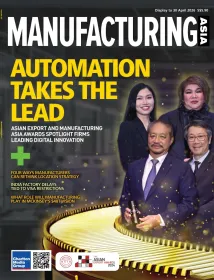
How CPG manufacturers can adapt to a changing market
McKinsey proposes a dual agenda.
The consumer goods industry has experienced a decline in top-line growth over the past decade, with consumer packaged goods (CPGs) struggling to generate earnings growth through cost reduction. From 1980 to 2012, the CPG industry enjoyed an average annual revenue growth of 9% and a 22% return on invested capital (ROIC).
According to McKinsey & Company, manufacturers now find themselves at a critical juncture. To navigate the complexities of today's market and build a resilient, future-proof industry, CPG companies must adopt a dual agenda focusing on both portfolio management and performance excellence. By identifying and investing in profitable growth areas and leveraging technologies, manufacturers can adapt and thrive.
The CPG industry's traditional formula for creating value in a steadily expanding market—relying on building strong brands, expanding with growing markets and channels, and managing costs—lost its power in the 2010s due to slowing population growth, consolidated grocers, and fragmented consumer attention. From 2012 to 2019, industry revenue grew by only 2% per year.
The pandemic and inflation have further reshaped the profit-and-loss landscape, with a 27% ROIC excluding goodwill and a 250 basis point decrease in SG&A. The CPG sector's traditional approach has been challenged by four megatrends: macroeconomic slowdown, consumer fragmentation, and the mass-merchant squeeze.
Escalating and volatile costs have also challenged traditional cost-management strategies. To revive industry performance, CPG companies must find ways to renew growth in a constrained environment and further reduce costs despite already significant efforts.
Macroeconomic slowdown
The global consumer goods industry is facing a slowdown due to a decline in population growth and wealth expansion in developing markets. The industry is forecasted to rebound to an inflation-adjusted 3% to 5%, half of its pre-COVID-19 growth. CPGs need to work harder to generate growth and share steal has become more important.
The underlying market growth will be 50% lower than in the 2000s, with over 75% derived from developing markets but more geographically dispersed. China will shift from contributing more than 30% of global growth to 14%. The United States will contribute 12% of industry growth compared to 7% in pre-COVID-19.
CPG brands are losing relevance due to digital fragmentation and the need for innovation and marketing functions to be revolutionised. Digital now represents 75% of all advertising spend, but CPG advertising is only 50% digital. The cost-of-living crisis has caused 80% of consumers to pull back on spending, and rising interest rates have led many privately funded small brands to reduce their marketing budgets.
The next era will be critical, as large CPGs will need to own the growth in their categories through innovation and relevant marketing or focus on yesterday's winning formula, allowing small companies to own this growth. The potential role of prescription GLP-1 weight-loss medications like Mounjaro, Wegovy, and Zepbound is also important to track.
Mass merchant squeeze
Supermarkets have lost five percentage points of market share over the past decade, with e-commerce in the US and the UK, discounters across Europe, and warehouse formats in Latin America being the key winners. Grocers, particularly those in developed markets outside the United States, are experiencing low growth and strong pressure on profitability. European grocers are responding by cutting prices, becoming tougher negotiators, investing in private labels, and demanding more supply chain excellence. These moves make the trade structure in the US more attractive than in Europe.
Commodity prices are forecasted to remain elevated, at 20% to 40% above 2019 levels, at least until 2025. Food commodities will be challenged further as climate change effects build. Out of 21 major food commodities analysed, 85% are expected to face moderate or substantial increases in drought exposure, leading to lower crop yields and more frequent crop failures. Several crops are in an acute position, in which they face both substantially increasing drought risk and highly concentrated footprints, including almonds, olives, hops, and cocoa.
To recapture the crown of an investor darling and rescue the decade, CPGs need to rally around an ambitious change agenda on both portfolio (Agenda 1) and performance (Agenda 2). Agenda 1 involves getting more exposed to profitable growth by having the foresight to see growth pockets and focusing resources on those pockets. Agenda 2 focuses on outperforming wherever they play, driving relentless commercial excellence and embedding best-practise tools and capabilities in more than 75% of revenues.
CPG companies need strong portfolio management to reshape their current portfolio and extend it into new businesses, expanding their access to sources of profitable growth. Portfolio reshaping involves focusing resources on the most promising categories and geographies, developing a robust planning process, and reallocating at least 5% of those resources each year. Leveraging mergers, acquisitions, and divestitures can strengthen exposure to the most successful categories and geographies. Joint ventures and partnerships across the value chain can generate 2.5 percentage points more Total Return on Share (TSR) than organic growth alone.
Extending into new businesses is essential for CPG companies to rekindle growth and boost margins. Companies should set ambitious targets, such as aiming for the new business to deliver at least one-third of the company's revenue within ten years. Some CPG companies have taken the plunge, such as Mars transforming its pet food business into pet care and AB InBev's BEES, building "eB2B" wholesale digital platforms.
Outperforming is critical given today's growth challenges, and CPGs need to focus on capability builds to lead on share steal, market expansion, and premiumization. Achieving commercial excellence is now critical, from key account partnerships to digitally enabled routes to market excellence and succeeding in newer channels like e-marketplaces. Capability builds that require thousands of colleagues to change are never easy, but the right tech and operating model should support local tailoring while benefiting from scale.
CPG companies are undergoing a marketing revolution, with a focus on digital advertising and innovation. Gen AI can accelerate these skills, with four front-runner use cases: accessing proprietary insights, accelerating product and brand innovation, adapting creative content, and optimising media campaigns and spending. However, the basics remain critical, such as starting with the consumer, generating brilliant creativity, using the right channel mix, and sufficient spending to engage consumers with relevant messages.
Innovation is crucial for CPG companies, as it is the number-one lever for growth. To create growth in their categories, CPGs must reinvest in consumer-centric product design processes, reimagine products in light of new technologies, and upgrade their innovation operating models. Technology is set to transform CPG efficiency over the next decades, generating 55-60% savings in the supply chain, 45-55% in back-office functions, and 40-45% in commercial functions. Key technologies include gen AI, applied AI, robotic process automation, next-generation analytics, robotics, and autonomous vehicles.
To drive down the cost of goods sold without reducing consumer appeal, CPGs can strengthen product design by modularising, tearing down, and benchmarking every element in new designs, while decarbonising with minimal additional costs. Even leading CPG companies still lag behind industries like automotive and medical products in embracing design-to-value.















